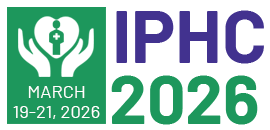Pneumonia
Pneumonia is an infectious respiratory condition characterized by inflammation of the air sacs in the lungs. Typically caused by bacteria, viruses, or fungi, pneumonia can lead to symptoms such as cough, fever, and difficulty breathing. It is a communicable disease that can spread through respiratory droplets when an infected person coughs or sneezes. The severity of pneumonia can vary, with some cases requiring hospitalization, especially in vulnerable populations such as the elderly, young children, or individuals with weakened immune systems. Prompt diagnosis and treatment with antibiotics or antiviral medications are crucial to prevent complications and aid recovery. Preventive measures include vaccination against common respiratory pathogens, practicing good hand hygiene, and avoiding close contact with individuals who have respiratory infections. Adequate nutrition and a healthy lifestyle also contribute to overall respiratory health, reducing the risk of pneumonia. While pneumonia is a prevalent and potentially serious communicable disease, timely medical intervention, vaccination, and preventive measures can significantly mitigate its impact on public health.

Kenneth R Pelletier
University of California, United States
Gregory S Anderson
Thompson Rivers University, Canada
David John Wortley
World Lifestyle Medicine Education Services, United Kingdom
Amelia Burke Garcia
NORC at the University of Chicago, United States
Rafaela Julia Batista Veronezi
Physiotherapist, Neuroscientist & Public Health Educator, United States
Roman Sharnuud
University of Tennessee, United States



Title : The impact of AI on the future of public health and preventative healthcare
David John Wortley, World Lifestyle Medicine Education Services, United Kingdom
Title : Personalized and Precision Medicine (PPM) as a unique healthcare model to secure the human healthcare, wellness and biosafety through the view of public health, network-driven healthcare services and lifestyle management
Sergey Suchkov, 1N.D. Zelinskii Institute for Organic Chemistry of the Russian Academy of Sciences, Moscow, Russia, Russian Federation
Title : Psychoeducation programs to address post-traumatic stress injuries and mental health in public safety and frontline health care workers
Gregory S Anderson, Thompson Rivers University, Canada
Title : Managing integration and interoperability of intelligent and ethical transformed health and social care ecosystems
Habil Bernd Blobel, University of Regensburg, Germany
Title : Scientific evaluate quantification of social and behavioral by scalp acupuncture on children with autism spectrum disorder
Zhenhuan Liu, University of Chinese Medicine, China
Title : Environmental Public Health Impact Assessment (EHIA) process for tobacco processing plants
Vijayan Gurumurthy Iyer, Techno-Economic- Environmental Study and Check Consultancy Services, India